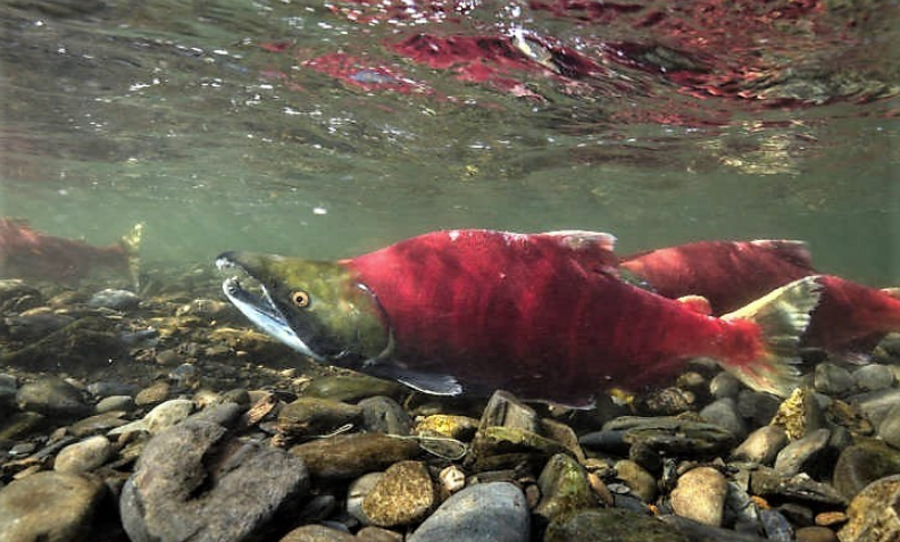
Alaskan sockeye salmon (Oncorhynchus nerka). Photo credit US Fish & Wildlife Service taken June 28, 2019. A commons image.
A Rare Salmon Type Is in the Crosshairs of Alaska’s Proposed Pebble Mine
The Koktuli River watershed, potential home of the future open-pit mine, is also home to a distinctive river-type sockeye.
Bristol Bay is one of the last places in the world that consistently produces huge numbers of wild sockeye, and the fishery that relies on them contributes US $1.5-billion a year in economic activity. That consistency stems from the region’s diversity: it is home to many different salmon populations and many different kinds of salmon habitat. Each year, the contributions of each to the total catch in the bay varies considerably. And the variation creates resilience—a so-called portfolio effect—that is key to this region’s ongoing productivity, according to Daniel Schindler, a University of Washington ecologist who has studied Bristol Bay salmon for decades. But even among this diversity, Koktuli River sockeye are particularly interesting.
Complete reading this story in Hakai Magazine . . .






